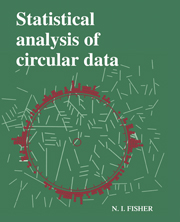Book contents
- Frontmatter
- Contents
- Preface to the first paperback edition
- Preface
- 1 Introduction
- 2 Descriptive methods
- 3 Models
- 4 Analysis of a single sample of data
- 5 Analysis of two or more samples, and of other experimental layouts
- 6 Correlation and regression
- 7 Analysis of data with temporal or spatial structure
- 8 Some modern statistical techniques for testing and estimation
- Appendix A Tables
- Appendix B Data sets
- References
- Index
8 - Some modern statistical techniques for testing and estimation
Published online by Cambridge University Press: 03 May 2011
- Frontmatter
- Contents
- Preface to the first paperback edition
- Preface
- 1 Introduction
- 2 Descriptive methods
- 3 Models
- 4 Analysis of a single sample of data
- 5 Analysis of two or more samples, and of other experimental layouts
- 6 Correlation and regression
- 7 Analysis of data with temporal or spatial structure
- 8 Some modern statistical techniques for testing and estimation
- Appendix A Tables
- Appendix B Data sets
- References
- Index
Summary
Introduction
This chapter contains descriptions of two general classes of statistical methods used extensively in the earlier chapters of the book, namely bootstrap methods and randomisation methods.
The phrase ‘bootstrap methods’ refers to a class of computer-intensive statistical procedures which can often be helpful for carrying out a statistical test or for assessing the variability of a point estimate in situations where more usual statistical procedures are not valid and/or not available (e.g. the sampling distribution of a statistic is not known). Typically, but not always, these situations arise when only small amounts of data are available for analysis. The bootstrap methods not only provide satisfactory results in small samples, but compare favourably with other large-sample methods in larger samples for which the latter may be applicable. Accordingly, if one is in some doubt about the precise sample size at which to switch from a small-sample method to a large-sample method, both approaches can be used and the results compared. Generally, in estimation problems the large sample methods provide a more convenient summary of the data, and are far simpler to implement. See Efron (1982) and Efron & Gong (1983) for accessible introductions to the subject. Hall (1992) has given a theoretical account of many aspects of the bootstrap.
In Section 8.2, the basic elements of the bootstrap method are described, in the context of a simple example for linear data.
- Type
- Chapter
- Information
- Statistical Analysis of Circular Data , pp. 199 - 218Publisher: Cambridge University PressPrint publication year: 1993



